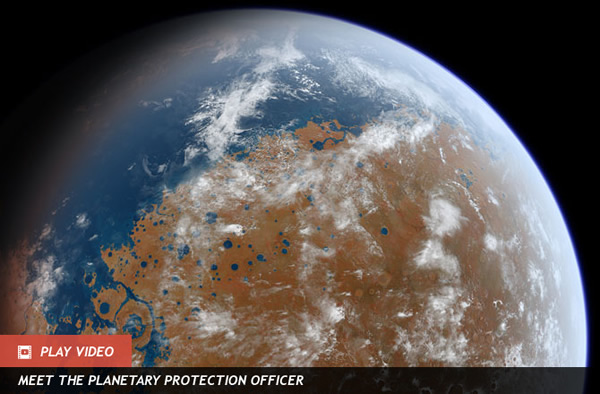Ancient Martians May Have Been Hydrogen Powered
Ancient Martians May Have Been Hydrogen Powered
While it’s hard to imagine much life surviving on the arid surface of Mars, there’s still some hope of finding Martian life in underground habitats. But for any life forms to survive, they’d need some kind of energy source, like the way we breathe oxygen. One interesting possibility is that Mars life may be hydrogen powered.
A group of researchers led by Lisa Mayhew, of CU Boulder, has identified a particular chemical reaction that may take place between iron-containing minerals and water, which produces hydrogen gas. So much hydrogen gas, in fact, that it could potentially support life in underground habitats — either here on our own planet, or in similar ecological niches on Mars.
Specifically, this chemical reaction is known to occur between seawater and igneous rocks under the ocean floor. Near hydrothermal vents, at high temperatures, the rocks release iron ions into the water that react with the surrounding water to produce iron oxides and hydrogen gas.
While this hydrogen (dissolved in the water) is produced in regions too hot for life to flourish (over 200°C), it seeps out from the rocks into cooler regions where some microbes are already known to be sustained by it. Mayhew and her colleagues have found the first evidence that this reaction can work perfectly well at lower temperatures too. She explains, ”Water-rock reactions that produce hydrogen gas are thought to have been one of the earliest sources of energy for life on Earth.”
“However,” she elaborated, “we know very little about the possibility that hydrogen will be produced from these reactions when the temperatures are low enough that life can survive. If these reactions could make enough hydrogen at these low temperatures, then microorganisms might be able to live in the rocks where this reaction occurs, which could potentially be a huge subsurface microbial habitat for hydrogen-utilizing life.”
With a reaction like this happening so easily, it gives some interesting insight into how primitive life may have survived on the infant Earth — and if primitive terrestrial life could have survived this way, then primitive Martian life could have just as easily done the same.
Could hydrogen-powered life have lived on Mars? Currently, the possibility still can’t be ruled out. A mechanism like this one could certainly have provided a plentiful supply of energy for indigenous martian microbes. Mayhew and her team found that hydrogen could be produced at temperatures in the range of 50-100°C, by rocks containing a specific mineral called spinel.
Spinels are a common type of mineral found on both Mars and Earth (they’re often found together with rubies here on our own planet). On close investigation, the researchers found that the spinels helped facilitate the formation of hydrogen, allowing the reaction to proceed even at lower temperatures than it had been observed before.
Lifestyles of the Modern Martian
While modern Mars may not be burdened with an overabundance of water, it was almost certainly a much more watery world in the past. The recent discovery of martian pebbles give incontestable proof that rivers once flowed on Mars. That said, there’s some evidence that Mars may still be hiding water. Previously, other rock-water reactions, such as serpentinisation, have been suggested before to explain the presence of methane gas in the Martian atmosphere.
The truth is, Mars is a mysterious little world. We’ve been sending robot explorers there for decades, but there’s a lot about it which is still a little puzzling. That said, we understand a lot more about our planetary neighbor now than ever before, and some things about it are, frankly, quite familiar.
As it happens, Mars is familiar enough that some astrobiologists are confident that if we can find life anywhere else in our solar system, we might find it there. After all, it’s not all that much colder than Earth, and has none of the searing heat and acid skies found on certain other nearby planets.
If Mars is hiding warmer temperatures and liquid water below its surface, it’s just possible that some kind of Martian life might be hiding underground even today. While there’s no way of saying for certain, it’s an intriguing possibility.(Jun 9, 2013 04:10 PM ET // by Markus Hammonds)












